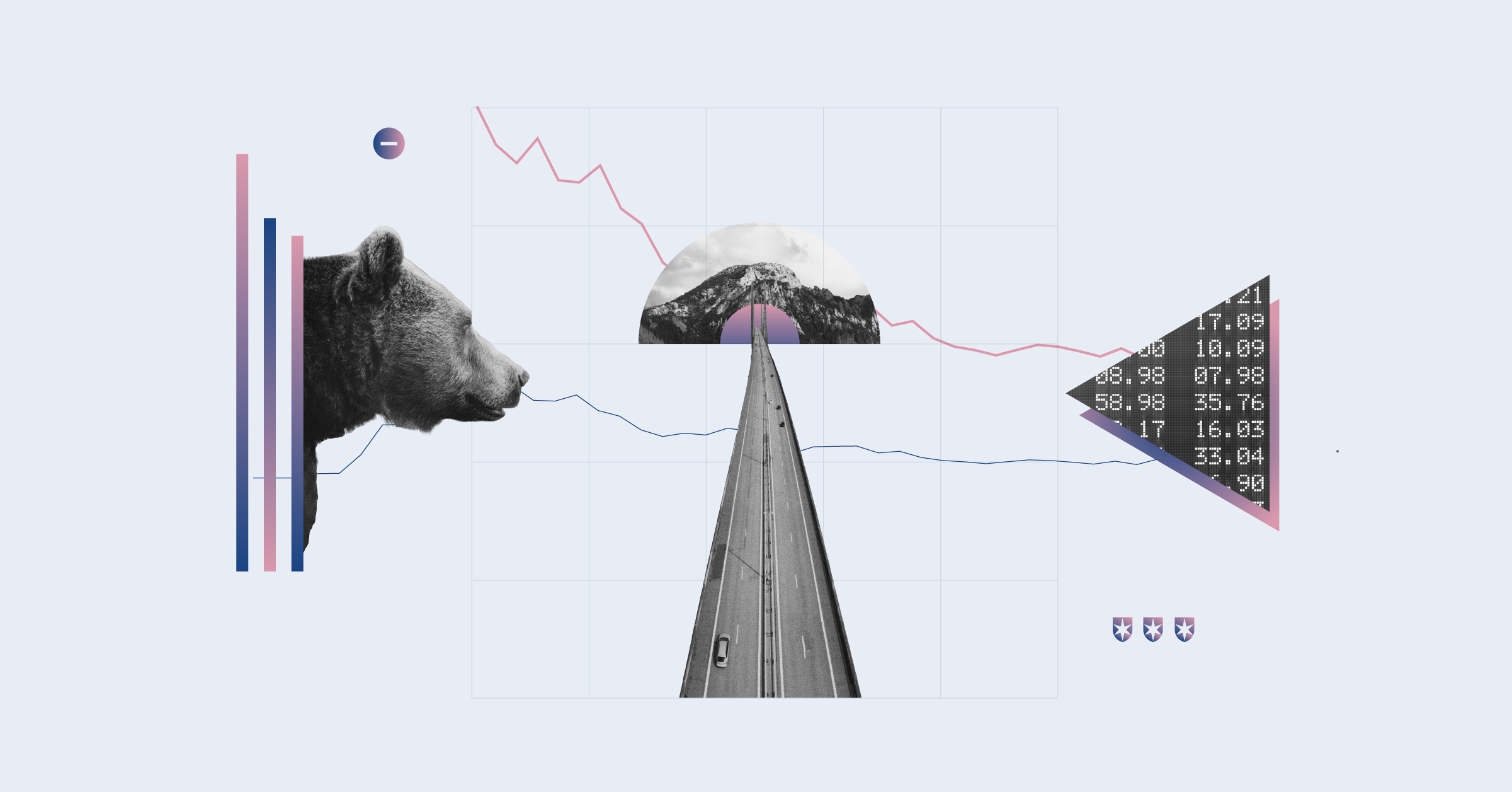
The stock market typically rewards those who are patient enough to take the slow and steady approach to investing. But anyone with stocks in their portfolio knows it is not all sunshine.
When the stock market goes into an extended decline, you might hear the terms “market correction” and “bear market” in the news. We define the terms and look to historical events to give context to market volatility.
What Is a Market Correction?
A “correction” refers to a market decline greater than 10%, but less than 20%, from its most recent high. The term can be applied to single securities or broader markets, such as a country’s equity benchmark. The 10% threshold is arbitrary, but it represents a significant decline. A correction can last any length of time, from days to months or more. Stock market corrections are fairly common- there have been 10 of them on Wall Street since the year 2000- and usually short-lived. Historically, market corrections have lasted an average of three to four months.
While market corrections can hurt short-term investors, they present potential buying opportunities for those with longer investing horizons. The term “correction” comes from the historical tendency for these price drops to “correct” the market by returning prices to their longer-term trend.
What Is a Bear Market?
Bear markets are usually defined as stock market declines of at least 20% from their most recent peak. They can last any length of time, though they tend to last longer than market corrections. Wall Street considers bear markets to be over when the stock market closes at a new record high.
The actual start and end of a bear market, however, can only be determined after the fact.
Although a bear market is declared once the stock market, represented by a broad index such as the Morningstar Europe or the S&P 500 index, falls at least 20% from its previous high, the entire decline is considered part of the bear market. Similarly, the following market rally, or bull market, is declared once the market reaches a new all-time high, but it includes the entire recovery from the low point of the bear market.
The chart below shows 2020’s decline in the Morningstar Europe All Cap Index and subsequent recovery to illustrate the timeline of a bear market.
The bear market in 2020 was the shortest ever, lasting only a month. Previously, bear markets have lasted an average of about nine and a half months. Still, these periods of decline have been shorter than periods of growth.
What Causes Market Downturns?
Compared with a market correction, a bear market indicates a greater crisis of investor confidence about the future. The causes of investor pessimism can vary. The most common trigger is a weak or slowing economy or the anticipation of an economic slowdown. Alternatively, investors may feel that the market is too hot and prices too high.
Signs of an economic slowdown or other events may cause investors to become pessimistic about the prospect of future returns on investment, prompting them to sell shares. The market declines as a sell-off gains momentum and pessimism spreads.
Although bear markets often go hand in hand with economic recessions, they are based on completely different indicators. A recession describes a slowdown in economic output and is defined as at least two consecutive quarters of decline in gross domestic product, or GDP.
In short, the stock market is not the economy; the market may be up even as economic output is down.
Do All Market Corrections Lead to Bear Markets?
The answer is no. In fact, most market corrections have not led to bear markets. For example, going back to 1975, only six of the 27 market corrections in the US S&P 500 benchmark have turned into bear markets. But as difficult as it is to predict the duration of a market downturn, there is also no surefire way to predict whether a market correction is actually the start of a bear market.
When and Why Does Trading Stop?
While it may take days or weeks to enter correction or bear-market territory, sudden stock market declines can happen during a single day of trading. To prevent this, markets use safeguards like circuit breakers, which temporarily stop trading when prices move too quickly. Circuit breakers stop trading if a price moves beyond a set range, while price collars limit trading by rejecting orders outside the range.
The idea behind an automatic halt to trading is to calm panic-stricken markets. The circuit breakers force investors to take a brief pause from the ongoing chaos to review and reassess the situation.
Under the European Union’s MiFID II regulations, trading venues like stock exchanges must be able to halt trading temporarily, and regulator ESMA has provided guidelines on how to set these mechanisms. However, the implementation of circuit breakers and price collars varies across EU markets in terms of type, thresholds, duration, and transparency.
In an era of high-frequency computerized trading, circuit breakers are intended to act as a speed bump when markets are in a tailspin and help restore calm. In the frenzied equities selloff at the start of the coronavirus pandemic on March 9, Frankfurt’s Xetra trading platform interrupted trading for individual stocks more than 1,000 times.
The author or authors do not own shares in any securities mentioned in this article. Find out about Morningstar's editorial policies.